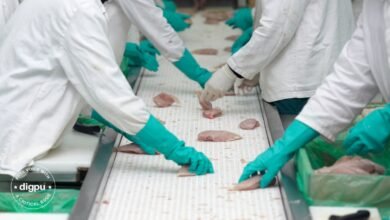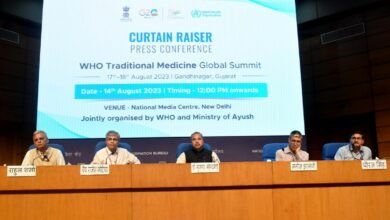Suramin drug reduces emergence of drug resistance in mycobacteria: RGCB Study

The study tested the efficacy of Suramin, a WHO-approved drug used for treating sleeping sickness and river blindness infections.
A family of harmful bacteria that causes diseases like TB and leprosy has become increasingly resistant to antibiotics, and the alarming situation warrants novel strategies to control evolution of drug resistance in mycobacteria, says a study by Dr. Krishna Kurthkoti, a scientist and researcher at Rajiv Gandhi Centre for Biotechnology (RGCB).
The study, published in Antimicrobial agents and chemotherapy, reveals that application of antibiotics results in a two-phase killing of bacteria, with a significant part of the population being killed rapidly while a smaller sub-population of bacteria called ‘persister’ endures the antibiotic and persist in the environment for extended periods.
The persisters also get killed because they remain susceptible to antibiotics, but the killing rate is much slower. Non-compliance with the duration of antibiotic therapy results in a relapse of infection caused by the persisters.
Recent reports also suggest that antibiotic persisters (APs) of mycobacteria develop resistance upon treatment with lethal doses of ciprofloxacin or rifampicin.
The research conducted in the laboratory of Dr Krishna demonstrated that the persister population of M. smegmatis generated by antibiotic treatment showed high levels of reactive oxygen species (ROS), which consequently resulted in the rapid emergence of drug resistance to single and multiple antibiotics.
Strategies to tackle drug-resistant strains include identification of new antibiotics or targeting the bacterial mechanisms that reduce the rate of evolution of resistance. “We took the second approach as identifying new and potent antibacterial antibiotics takes time and should pass rigorous safety standards before using human therapy,” said Dr Kurthkoti.
Efficacy of Suramin studied
The study tested the efficacy of Suramin, a WHO-approved drug used for treating Trypanasomal (sleeping sickness and river blindness) infections. It showed that a combination of Suramin during antibiotic therapy reduced the emergence rate of drug resistance in M. smegmatis and M. tuberculosis under laboratory conditions. Since Suramin is already an approved drug, its repurposing to control the emergence of drug resistance would increase the life expectancy of existing drugs providing valuable time to develop and approve new antibiotics.
RGCB director Dr Chandrabhas Narayana said it is a significant study as it highlights suramin’s novel application as a broad-spectrum agent in combating the development of drug resistance. It will bring into focus the need to discover new antibiotics to counter the emergence of antimicrobial resistance (AMR), which has become a major global health concern compelling the WHO to declare that the crisis needs immediate attention.
Drug-resistant pathogen threat to public health
A group of six virulent and drug-resistant pathogens, Enterococcus faecium, Staphylococcus aureus, Klebsiella pneumoniae, Acinetobacter baumannii, Pseudomonas aeruginosa, and Enterobacter spp (ESKAPE), have been identified as the biggest threat to public health.
In a recent report published in Lancet, 1.27 million deaths were directly linked to AMR bacteria, significantly more than the deaths caused by HIV/AIDS or malaria. Also, TB caused by Mycobacterium tuberculosis continues to be a leading cause of death, with nearly a million cases dying annually. To complicate matters, the emergence of multidrug-resistant (MDR) strains resistant to frontline drugs isoniazid and rifampicin makes the course of treatment much longer.
According to the WHO report on TB, India adds the maximum number of reported cases (around 2.5 million) and 124,000 cases of MDR TB. With the Central Government taking an aggressive policy to control TB, developing new therapeutics and understanding the mechanisms that cause drug resistance in mycobacteria become necessary.







